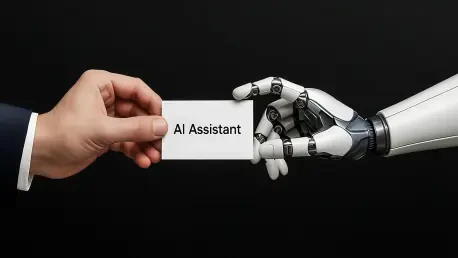As an e-commerce strategist with a wealth of experience in customer engagement and operations management, Zainab Hussain brings a unique perspective to the evolving landscape of customer experience (CX). With AI reshaping contact centers and redefining service delivery, Zainab offers deep insights into how technology and human expertise can work together to enhance both customer satisfaction and operational efficiency. In this interview, we explore the transformative role of AI in customer service, the balance between automation and human touch, the challenges of current AI imperfections, and the future of agent roles in an increasingly digital world. Join us as we dive into these critical themes with a true expert in the field.
How do you see AI shaping the current landscape of customer service in contact centers?
AI is making a huge impact on contact centers by taking on repetitive, high-volume tasks that used to bog down human agents. Things like answering basic questions, tracking parcels, or processing returns are now often handled by AI with impressive speed and accuracy. It’s also revolutionized self-service options—customers can resolve issues through chatbots or automated systems much faster than a few years ago, when you’d often wait on hold forever. The technology isn’t perfect, but it’s freeing up agents to focus on more complex problems, which is a win for both efficiency and customer satisfaction.
What are some specific tasks AI is excelling at right now in customer service?
AI is really shining in handling routine inquiries that don’t need a personal touch. For instance, tracking a package or checking an order status—AI can pull that data instantly and deliver it to the customer without any human intervention. It’s also great at things like password resets or basic troubleshooting through automated prompts. These are the kinds of tasks that used to eat up an agent’s day, and now AI manages them at scale, often 24/7, which is something humans just can’t match in terms of availability.
How do you feel about the narrative that AI might completely replace human agents in the near future?
I think that narrative is overblown. We’re nowhere near a point where AI can fully replace human agents, especially for nuanced or emotionally charged interactions. AI is better seen as a partner, not a substitute. It’s there to handle the grunt work, so agents can focus on building relationships or solving tricky issues. The idea of replacement ignores the unique value humans bring—like empathy or creative problem-solving—that AI can’t replicate yet. It’s more about augmentation than elimination.
In what ways is AI supporting agents rather than replacing them?
AI is becoming an incredible tool for agents by boosting their productivity and reducing stress. For example, real-time agent assist features can pull up relevant information or suggest responses during a call, cutting down on research time. Summarization tools help wrap up after-call work faster by condensing conversations into key points. Smart routing also ensures calls go to the right person based on predicted intent. These tools don’t just make the job easier—they help agents deliver better service and feel less burned out.
What does the concept of a ‘messy middle’ mean to you when it comes to AI in customer service?
The ‘messy middle’ is where we are right now—AI is powerful, but it’s far from flawless. It can do amazing things like automate responses or predict customer needs, but it often stumbles with context or complex queries. Customers get frustrated when they’re stuck in endless bot loops or when AI misinterprets their problem. It’s a transition phase where the tech is ahead of the workflows and integration needed to make it seamless. We’ve got the tools, but the operational side hasn’t fully caught up.
What are some of the biggest challenges or imperfections you’ve observed with AI in customer service today?
One major challenge is AI’s struggle with nuanced or ambiguous situations. It’s often too rigid—scripted responses don’t adapt well to unique customer needs, leading to frustration. Another issue is data quality and integration; if the backend systems aren’t aligned, AI can’t pull accurate info, and the customer pays the price. Then there’s the bot-loop problem—customers feel trapped when automation can’t escalate to a human. These imperfections aren’t just tech issues; they’re about how we design and implement AI in real-world scenarios.
How do you think the role of human agents is evolving as AI takes on more routine tasks?
Human agents are moving toward higher-value roles, focusing on what machines can’t do well. They’re still unmatched in showing empathy, building trust, or handling complex issues that need judgment. With AI managing the mundane stuff, agents can dive into problem-solving, relationship-building, or even cross-selling opportunities. It’s a shift from just answering calls to becoming troubleshooters and brand ambassadors. I believe this evolution will demand more skills and, hopefully, better compensation as the role becomes more strategic.
What’s your take on the idea of AI working directly for customers, not just companies?
It’s a game-changer. We’re talking about ‘agentic AI’—think of your digital assistant negotiating bills or chasing refunds on your behalf. Imagine telling Siri to handle a service cancellation and only looping you in for final approval. This flips the script; AI isn’t just a company tool but a customer advocate. It could level the playing field, especially with bot-to-bot negotiations where customer-side AI interacts directly with company systems. It’s exciting, but companies aren’t fully prepared for this shift—they’ll need to adapt to AI acting as a customer proxy.
How do you see infrastructure playing a role in making AI effective in customer service?
AI isn’t a plug-and-play solution; it’s not magic. It needs solid infrastructure to work—clean data, integrated systems, proper workflows, and ongoing training. Without that, even the best AI fails. For instance, if your knowledge base is outdated, AI will give wrong answers. If channels aren’t connected, customers still face disjointed experiences. The real challenge isn’t the AI software; it’s building the backend to support it and getting teams to embrace these changes. Infrastructure is the unsung hero of AI success in CX.
What is your forecast for the future of AI and human collaboration in customer experience?
I see a future where AI and humans are seamlessly integrated, each playing to their strengths. AI will keep advancing in handling routine tasks and even predicting customer needs before issues arise. Humans will focus on emotional intelligence, complex problem-solving, and creating genuine connections that build loyalty. The next few years will be about refining this balance—improving AI’s contextual understanding while empowering agents with better tools and training. Organizations that master this blend of automation and humanity will lead the way in delivering exceptional customer experiences.









